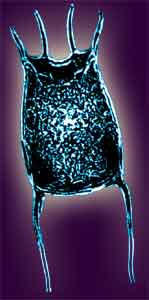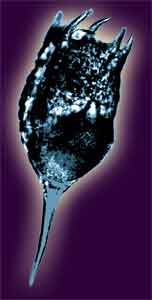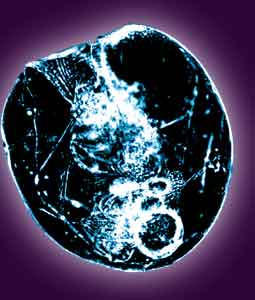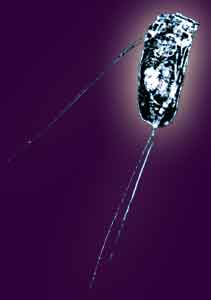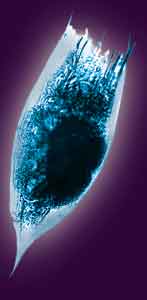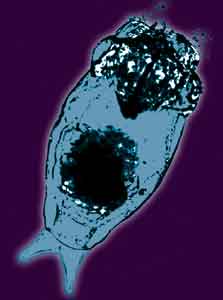Hello, Guest!
Zoological excursions
Rotifers (Rotatoria)
Rotifers are one of the smallest representatives of multicellular animals. Their body length varies between some tenths and hundredths of millimeters. It is possible to see these animals only under a microscope. Those who consider that worms are something long and nasty will never recognize in rotifers their close relatives. Meanwhile, they belong to nematode worms (roundworms).
On the anterior plate of the rotifer, there is a rotary apparatus consisting of cilia the throbbing of which brings water with small particles (bacteria, algae and detritus lumps) into the mouth. At the same time, it helps the animal to move forward. A small body of rotifers of the genus Keratella is in the hard lorica of austere and beautiful geometric outlines with a variety of appendages like K. quadrata and K. cochlearis have. The majority of rotifers are peaceful consumers of suspended particles in the water. However, there are forms which readily feed on their congeners. This is, for example, a transparent slow Asplanchna priodonta, which catches a large prey, including other rotifers, with its jaws resembling a trap.
|
|
|
|
|
|
Among endemic Baikal rotifers there are numerous representatives of genera Notholcaand Synchaeta. The real giants are Notholca grandis and Sуncheta pachypoda. The first one inhabits open waters of Lake Baikal in winter-autumn, preferring the upper 50-m water layer. Its lorica is round and longitudinally striated. The body is 0.4-0.5 mm long. Syncheta has a transparent foot with swollen toes. There is a rotary apparatus with two lateral projections. This rotifer is 0.7 mm long. This species is psychrophilic. It can be met at a depth of 400 m, but the majority is concentrated in the 0-25 m layer.
|
|
|
Besides endemic species of rotifers, there are also species of the general Siberian complex inhabiting the lake water column, as well as cosmopolitans, e.g. Filinia terminalis. Its body is elongated, spindle-shaped (about 0.1 mm long), rather narrow, transparent with a long back appendage. Two more mobile appendages are located on the both sides of the body. Stretching these appendages the rotifer floats in the water, while a sharp swing with appendages helps it jump upwards. Filinia is widely spread in the pelagic zone and in the littoral plankton of Lake Baikal and the Angara River reservoirs.
Copyright © 2005-2010 ЦНИТ ИГУ, 

Дизайн web-студия ЦНИТ ИГУ


